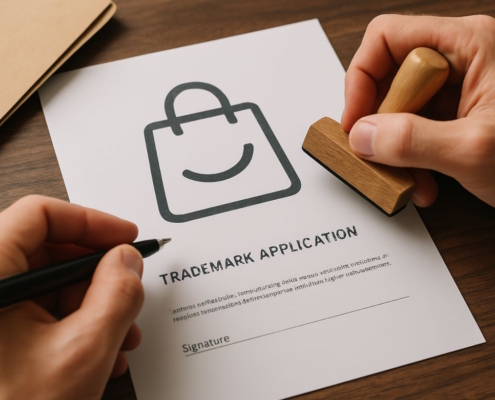10 Facts About Business Before Starting A Business
1) More than 50% of new businesses survive their first year in business. 2) Less than 50% of family-owned businesses are passed to their children. 3) 40% of business experience challenges in the supply chain…
Brad Nakase, Attorney
Email | Call (888) 600-8654
There are stories of successful businesses starting based on an entrepreneur’s hunch or a mere chance that they took. While these success stories do indeed happen, and can be inspiring, in general aspiring business owners should rely on data and facts to run a company in the modern age. Statistical facts about businesses businesses can offer insight on various topics, such as surviving the difficult first year in business, managing a labor shortage, and maintaining cash flow. By relying on hard facts, an entrepreneur may enter the business world with open and eyes and controlled expectations. This balanced, measured outlook is more likely to result in sustainable success.
That said, it can be difficult to identify facts about businesses amidst all the noise and nonsense on the internet. A quick Google can bring up seemingly legitimate business facts, but some of these sources may not provide accurate, up-to-date information.
This article will provide aspiring business owners with the facts about small business and trends related to running small businesses in the United States as follows:
1. What percentage of small businesses survive first year?
According to the Bureau of Labor Statistics, approximately twenty percent of small businesses fail within the first year, 30 percent fail by the second year, and fifty percent of small businesses failed by the fifth year.
The most common reasons small businesses fail include poor business models, poor marketing, and inexperienced management. Likewise, according to our business clients, their businesses failed because they ran out of money, had the wrong business partners, or needed to understand their industry.
The fact about businesses is that it is difficult for small businesses to survive long-term. Most owners of small to medium-sized businesses, therefore, have legitimate concerns about making their company stable enough to survive over many years.
For this reason, it is important for small business owners to plan for the long-term. While it is tempting to focus on surviving in the short-term, certain practices can risk the health of the company long-term. For instance, it might not be wise to pour all of one’s resources into a venture in the first few months. Without the proper planning and caution, a business may burn bright in the beginning, then fade away as money and resources run out.
2. What percentage of family owned businesses survive beyond the first generation?
A fact about small business is that less than one-third of family businesses survive the transition from the first generation to the second, and then 50% percent of those businesses don’t make it to the third generation.
In the United States, approximately 40% of family survive through a second generation. However, this number drops down to a meager 13% when it comes to passing the business onto a third generation. Only 3% of family-owned businesses survive into a fourth generation or beyond.
As these statistics show, the odds of passing down a family business over multiple generations are not great. To overcome these poor odds, a business owner should engage in careful planning and take early action. He or she should talk with potential heirs to the business and begin putting in place the necessary legal mechanisms.
3. Almost 40% of Small Businesses Are Currently Experiencing Supplier Delays
Covid-19 pandemic, Russia and Ukraine war, and labor strikes caused large and small business disrupted supply chains in 2020 to 2023. In general, supply chain problems lead to a lack of product availability. Because supply chains play a critical role in our economy, disruptions in shipping and storage affect almost all small businesses.
During times of recession, international crisis, or labor shortages, businesses can suffer from supplier delays. In additions to problems with supply chains, entrepreneurs also have to worry about an increase in the cost of commodities. It is important that small business owners stay focused on changes in commodity prices. These owners should think ahead and be prepared to adapt so they are not caught off guard by economic crises beyond their control.
4. Small Businesses Have Borne the Brunt of Recent Job Loss
A fact about small businesses is that over the past two years, private employment has dropped by more than 15%. While companies with over a thousand employees witnessed a 13.6% drop, companies with between 20 to 49 employees experienced a decline of 21.5%.
Small business that are in retail, wholesale, durable goods manufacturing have a labor shortage. These industries have more unfilled job openings than unemployed workers with experience in their respective industry. Workers are demanding remote work and flexibility and taking time to find jobs that they’ll enjoy.
5. Most Entrepreneurs Use Personal Savings or Loans to Cover Startup Costs
A fact about small businesses is that nearly seventy percent of entrepreneurs said they used personal funds to start their businesses. According to the U.S. Census Bureau, 64% of small business owners use their personal savings and money from their families to start a business, while 16.5% take out a business loan. Three of the most common sources of capital used to fund startups include the following:
- An entrepreneur’s personal or family savings – 64%
- Business loans from banks or other financial institutions – 17%
- Personal credit cards – 9%
Only half a percent of entrepreneurs use venture capital as a way of funding their startups. An aspiring small business owner should therefore be realistic about gathering startup funds. However brilliant one’s idea, it is highly unlikely an investor will offer the funding required. If an entrepreneur does not have personal savings from which to draw money, then loans or credit cards would be the best option.
6. Most High-Tech Workers Are Employed by Big Companies
Large companies with over 500 employees employ almost 65% of high-tech workers. A large firm has the economic scale to support high salaries, meaning that small businesses will have difficulty competing with more prominent companies’ compensation abilities. This means that entrepreneurs must determine how to compete for highly skilled workers using means other than salary. A small business may offer a positive company culture. This might include giving Fridays off, allowing employees to bring their pets to work, or offering gym memberships. These benefits can be just as attractive to skilled employees as high salaries.
7. Sixty Percent of Small Businesses Have a Hard Time with Cash Flow for Various Reasons
One of the significant challenges a small business faces is maintaining a steady cash flow. A fact in small businesses is that cash flow issues can arise from the inability to collect payments, over-investment in capacity or inventory, and low profit margins. The main reasons why a small business might suffer from a cash flow shortage include the following:
- Decreasing margins or sales
- Not getting paid according to an agreement’s terms
- Lack of cash reserves
- Seasonal demand changes
- Outstanding receivables
Cash flow issues can present a particularly dangerous problem because they can cause a company to become insolvent. A business owner can anticipate a cash flow issue by managing a simple budget and following it closely. By following a budget, a business owner will have time to respond to a cash flow issue by pursuing financing or by limiting spending.
8. Business Ownership is a Major Source of Family Wealth
According to 2019 to the Federal Reserve, business ownership is an important source of family wealth, representing 34% of non-financial assets. According to JP Morgan, the median net worth of self-employed families was nearly $400,000 and over four times greater than the $95,000 in net worth held by the typical working family. According to the US Census Bureau, family firms comprise 90 percent of all business enterprises. The greatest part of America’s wealth lies with family-owned businesses.
9. Veterans Are the Majority of Successful Businesses
A fact about business is that veterans own almost two million businesses and employ over five million Americans. While veterans make up only seven percent of the United States adult population, their businesses represent about six percent of all businesses. These businesses bring in an extraordinary $950 billion, employing almost 4 million employees with $178 billion in payroll per year.
10. Knowledge and Service Businesses Are Most Likely to Be Based at Home
Some types of small businesses are more likely to be run from an entrepreneur’s home than others. The primary business industries that fall into this category include the following:
- Information (70%)
- Professional, technical, and scientific services (65%)
If an individual is considering beginning a home-based small business, then they should take a look at these specific industries.
Summary
There is a lot of information on small businesses on the internet. By paying attention to legitimate sources of data and facts, an entrepreneur can become aware of business trends and stay up to date. This, in turn, can help a small business owner improve his or her operations and make their business a success.
Blog: Business | Corporate | Employment Law
See all blogs: Business | Corporate | Employment
See all blog: Business | Corporate | Employment































